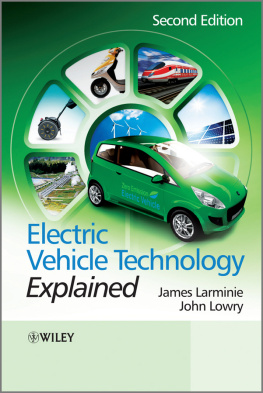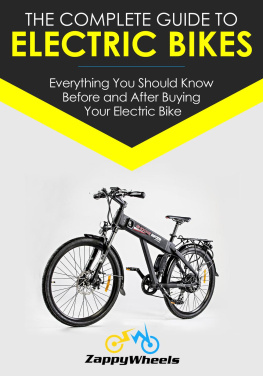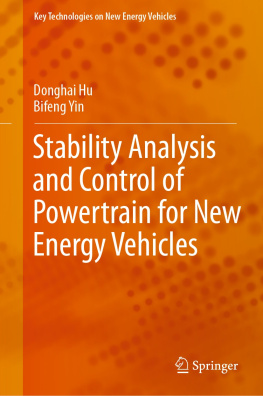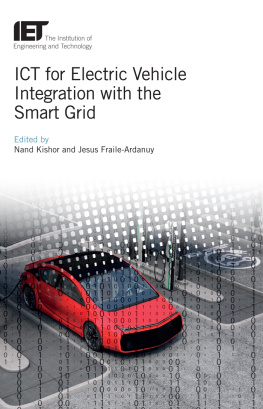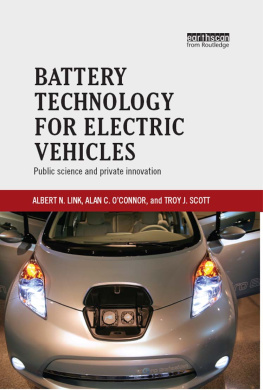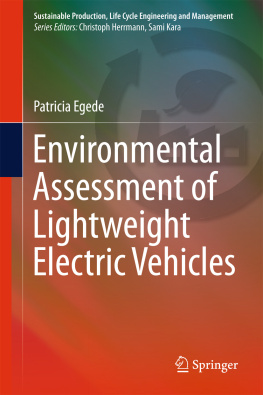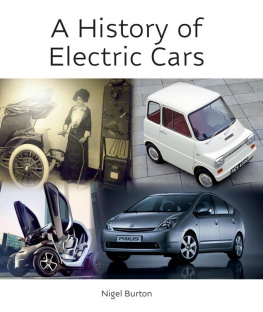This edition first published 2012
2012 John Wiley & Sons Ltd
Registered office
John Wiley & Sons Ltd, The Atrium, Southern Gate, Chichester, West Sussex, PO19 8SQ, United Kingdom
For details of our global editorial offices, for customer services and for information about how to apply for permission to reuse the copyright material in this book please see our website at www.wiley.com.
The right of the author to be identified as the author of this work has been asserted in accordance with the Copyright, Designs and Patents Act 1988.
All rights reserved. No part of this publication may be reproduced, stored in a retrieval system, or transmitted, in any form or by any means, electronic, mechanical, photocopying, recording or otherwise, except as permitted by the UK Copyright, Designs and Patents Act 1988, without the prior permission of the publisher.
Wiley also publishes its books in a variety of electronic formats. Some content that appears in print may not be available in electronic books.
Designations used by companies to distinguish their products are often claimed as trademarks. All brand names and product names used in this book are trade names, service marks, trademarks or registered trademarks of their respective owners. The publisher is not associated with any product or vendor mentioned in this book. This publication is designed to provide accurate and authoritative information in regard to the subject matter covered. It is sold on the understanding that the publisher is not engaged in rendering professional services. If professional advice or other expert assistance is required, the services of a competent professional should be sought.
MATLAB is a trademark of The MathWorks, Inc. and is used with permission. The MathWorks does not warrant the accuracy of the text or exercises in this book. This book's use or discussion of MATLAB software or related products does not constitute endorsement or sponsorship by The MathWorks of a particular pedagogical approach or particular use of the MATLAB software.
Library of Congress Cataloging-in-Publication Data
Larminie, James
Electric vehicle technology explained / James Larminie, John Lowry.
Second Edition.
pages cm
Includes bibliographical references and index.
ISBN 978-1-119-94273-3 (cloth)
1. Electric vehiclesTechnological innovations. 2. Electric vehicles
Design and construction. I. Lowry, John. II. Title.
TL220.L37 2012
629.2293 dc23
2012006649
A catalogue record for this book is available from the British Library.
Print ISBN: 9781119942733
About the Author
John Lowry is a professional engineer who graduated in Mechanical Engineering from Imperial College, London University. He holds a PhD from Queen Mary College, London University. He was formerly a university lecturer and is currently a consultant engineer. He is a Fellow of the Institution of Mechanical Engineers, the Institute of Energy and the Institute of Engineering and Technology.
Preface
Electric vehicle technology is now in its third century of development and is likely to advance rapidly in the coming years.
Electric trains are widely used and modern high-speed trains are competitive with air travel in terms of journey speed over shorter land routes. In energy terms they use less than 10% of the fuel per passenger kilometre than air transport.
Electric road vehicles have not achieved the commercial success that internal combustion engine vehicles have; however, battery technology has now developed to the point where electric vehicles are being commercially produced. Future battery developments are likely to accelerate the use of electric road vehicles in the next few years.
Small electric vehicles such as golf buggies and personnel carriers in airports have become well established. Electric bicycles are becoming increasingly popular and are considered one of the fastest ways to move about crowded cities.
Potential environmental benefits which can result from the use of electric vehicles are substantial when the vehicles use electricity that is generated from sources which use highly efficient modern generating stations or which use nuclear or sustainable energy. Environmental benefits include zero exhaust emissions in the vicinity of the vehicles, reduced dependence on fossil fuels and reduced overall carbon emissions.
This book explains both the technology of electric vehicles and how they affect the environment. The book is designed for engineers and scientists who require a thorough understanding of electric vehicle technology and its effects on the environment.
John Lowry
Acknowledgments
The authors would like to put on record their thanks to the following companies and organisations that have made this book possible:
Ballard Power Systems Inc., Canada
DaimlerChrysler Corp., USA and Germany
The Ford Motor Co., USA
FreeGo Electric Bikes Ltd, UK
General Motors Corp., USA
GfE Metalle und Materialien GmbH, Germany
Groupe Enerstat Inc., Canada
Hawker Power Systems Inc., USA
The Honda Motor Co. Ltd
Johnson Matthey Plc, UK
MAN Nutzfahrzeuge AG, Germany
MES-DEA SA, Switzerland
Micro Compact Car Smart GmbH
Mitsubishi Motors Corporation
National Motor Museum Beaulieu
Nissan Motor Manufacturing (UK) Ltd
Parry People Movers Ltd, UK
Paul Scherrer Institute, Switzerland
Peugeot SA, France
Powabyke Ltd, UK
Richens Mobility Centre, Oxford, UK
Saft Batteries, France
SR Drives Ltd, UK
Tesla Motors Inc.
Toyota Motor Co. Ltd
Wamfler GmbH, Germany
Varta/Johnson Controls
Zytek Group Ltd, UK
In addition we would like to thank friends and colleagues who have provided valuable comments and advice. We are also indebted to our families who have helped and put up with us while we devoted time and energy to this project. Special thanks are also due to Dr Peter Moss, formerly of The Defence Academy, Cranfield University, for reading and commenting on the draft manuscript.
Abbreviations
| ABS | Anti-lock brake system |
| AC | Alternating current |
| AFC | Alkaline fuel cell |
| BLDC | Brushless DC (motor) |
| BOP | Balance of plant |
| CAD | Computer-aided design |
| CAM | Computer-aided manufacturing |
| CARB | California Air Resources Board |
| CCGT | Combined cycle gas turbine |
| CFD | Computational fluid dynamics |
| CHP | Combined heat and power |
| CJR | Central Japan Railway |
| CNG | Compressed natural gas |
| CPO | Catalytic partial oxidation |
| DC | Direct current |
| DMFC | Direct methanol fuel cell |
| DOH | Degree of hybridisation |
| DOHC | Double overhead cam |
| ECCVT | Electronically controlled continuous variable transmission |
| ECM | Electronically commutated motor |
| EFTC | Electric Fuel Transportation Company |
| EMF | Electromotive force |
| EPA | Environmental Protection Agency |
| EPS | Electric power steering |
| ETSU | Energy Technology Support Unit (a UK government organisation) |

